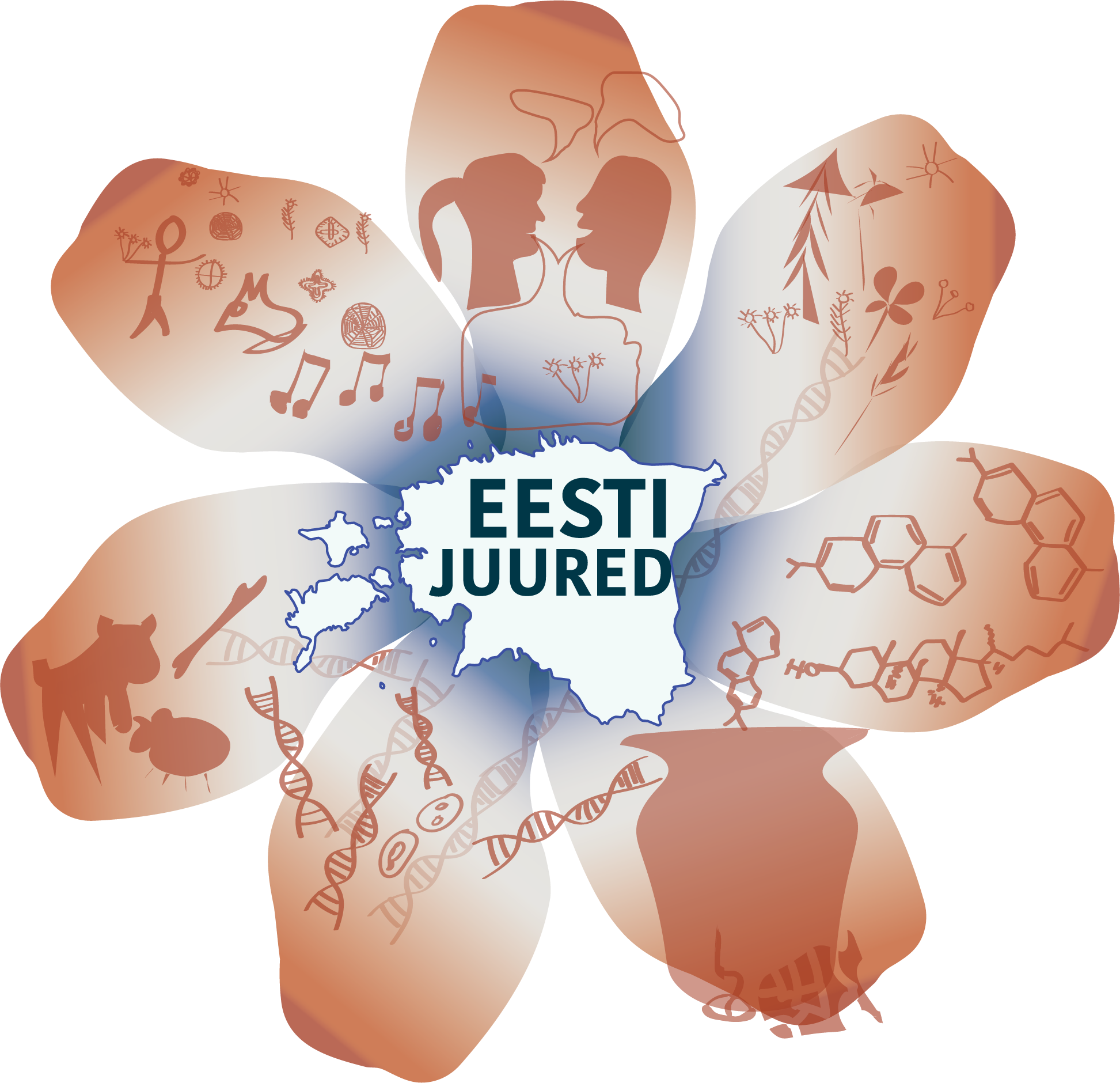-
- 1.1 The Comb Ceramic culture
- 1.2 The interruption of habitation and culture during the Early Bronze Age
-
1.3
The distribution of the western cultural tradition during the Early and Middle Bronze Age
- 1.3.1 The chronology of stone barrows, stone-cist graves, stone ships and Celtic fields
- 1.3.2 The burial customs, material findings and cultural background of Bronze Age stone graves
- 1.3.3 People buried in stone-cist graves based on ancient DNA
- 1.3.4 Connections between the Baltic and its neighbours based on material culture, linguistic history and ancient DNA
- 1.4 Language substrates
-
1.5
Waves of the first Finnic arrival
- 1.5.1 Pioneers – the first settlements with southwestern Tapiola pottery
- 1.5.2 The diversification of West Uralic
- 1.5.3 Fortified settlements
- 1.5.4 Early tarand-graves
- 1.5.5 The descendants, or later contacts with the eastern forest zone
- 1.5.6 The early diversification of Proto-Finnic
- 1.5.7 Läänemeresoome algkeele ajastu
- 1.6 The “second coming” of Finnic
-
1.7
The divergence of Finnic
- 1.7.1 The climate anomaly between 536–540 and the Justinian plague, and their possible influence on linguistic developments
- 1.7.2 The divergence of the South Estonian language and culture
- 1.7.3 Finnic groups during the second half of the I millennium
- 1.7.4 Läänemeresoomlased ajaloolise aja algul
- 1.7.5 Eestlaste materiaalne kultuur
- 1.7.6 Eesti keel muinasaja lõpul
- 1.7.7 Läänemeresoome rahvaste kultuur muinasaja lõpul
- 1.7.8 Rahvakalendri kujunemine ja kontaktid kultuuripiiridel
- 1.7.9 Regilaulu kujunemine
- 1.7.10 Jäljed muinasajast kohapärimuses
- 1.7.11 Seto rahva ja kultuuri kujunemine
- 1.7.12 Vanimad kohanimed
- 1.7.13 Ristiusustamise-eelsed isikunimed
-
- 2.1 Migratsioon maalt linna: kirjalikud allikad
- 2.2 Kaks kultuuriruumi: arheoloogia andmed
- 2.3 Esimesed keeleandmed ja murranguaeg
- 2.4 Maaeestlaste vana DNA
- 2.5 Katk keskaegses Eestis
- 2.6 Maasakslased ja -aadel
- 2.7 Etnilised "teised"
- 2.8 Linnarahvas
- 2.9 Etnokultuurilised kontaktid ja üleminekud
- 2.10 Nimede kihistused
- 2.11 Rahvakalendri kujunemisprotsessi regionaalsed aspektid keskajal
- 2.12 Rahvalaul ja -muusika keskajal
- 2.13 Rahvausund
- 2.14 Maaeestlased
-
- 3.1 Kommunikatsioon – (kuller)postikorraldus
- 3.2 Pärisorjus
- 3.3 Üldised rahvastikuprotsessid ja migratsioonid maaruumis
- 3.4 Abielu ja seksuaalsus
- 3.5 Maaeestlased
- 3.6 Kiriku mõjud eestlase identiteediloomele: reformatsioonist valgustuseni
- 3.7 Maasakslased ja -aadel
- 3.8 Soomlased Virumaal
- 3.9 Vanausulistest
- 3.10 Linnarahvas
- 3.11 Nimede kihistused
- 3.12 Uusaegne kihistus ajaloolises (koha)pärimuses
- 3.13 Pärast pärisorjust: pärisorjuse kaotamine, linnastumise algus, haridus ja meedia
- 3.14 Romad
-
- 4.1 Kommunikatsioon
- 4.2 Rahvastikuprotsessid
- 4.3 Rassiteadus eestlaste päritolust
- 4.4 Eesti keel teel rahvuskeeleks
- 4.5 Rahvast rahvuseks
- 4.6 Etnograafilised eripärad: traditsioonilise rahvakultuuri muutumine
- 4.7 Rahvalikud usulised identiteedid
- 4.8 Ajakirjandus ja identiteediloome
- 4.9 Nimed moderniseeruvas ühiskonnas
- 4.10 Teised rahvused Eesti alal
- 4.11 Etnokultuurilised kontaktid ja üleminekud
- 4.12 Eesti keele areng: normikeele üldistumine, sh keeleuuendused, muutused rahvakeeles
- 4.13 Isikunimed esimesel iseseisvusajal
- 4.14 Kohanimede eestistamine
- 4.15 Rahvakultuuri moderniseerumine
- 4.16 Teised rahvused Eesti Vabariigis
- 4.17 Rahvussuhted Eestis
- 4.18 Läänediasporaa enne II maailmasõda
- 4.19 Kommunikatsioon
- 4.20 Baltisakslaste ümberasumine
- 4.21 Suurküüditamine 1941. aastal
- 4.22 Evakueeritud ja reevakueeritud 1941–1945
- 4.23 Juutide ja mustlaste genotsiid Eestis
- 4.24 Demobiliseeritud
- 4.25 Asustuse muutus 1945–1991
- 4.26 Suurtööstuse arendamine ja sisseränne Eestisse pärast Teist maailmasõda
- 4.27 Nõukogude armee kohalolek Eestis
- 4.28 Rahvas, kultuur ja identiteet nõukogude ajal
- 4.29 Teised rahvused Eesti NSV-s
- 4.30 Eesnimekasutuse muutused
-
- 5.1 Rahvaloenduste andmed taasiseseisvunud Eesti rahvastiku olukorrast
- 5.2 Eestlased ja eesti identiteedid
- 5.3 Nimede kihistused
- 5.4 Teised rahvused Eestis
- 5.5 Võõrsile tööle: kalevipojad ja kalkunikitkujad, Austraalia banaanikorjajad, Soome pendelränne
- 5.6 Immigratsioon ja immigrandid
- 5.7 Segregatsioon
- 5.8 Regionaalsus tänapäeva rahvaluules ja rahvussuhted
- 5.9 Internet kui kultuurimeedium
- 5.10 Eesti elanikkonna geneetiline struktuur ja selle seosed naaberaladega
- 5.11 Eesti digitaalne tee
Definitions
A
Ancestral component – part of the genome of a group of people, i.e., population under discussion that is inherited from the genome of a specific population that lived in the past and contributed to the population.
Ancient DNA – genetic material isolated from bioarchaeological material (bone, tooth, tartar, hair, plant remains, coprolite, parchment, etc.).
C
Celtic fields – mostly patches of fields surrounded by square enclosures that in large amounts form large field areas. Besides Northwest and North Europe, Bronze Age Celtic fields are known only in Coastal Estonia.
Cultural layer – a layer formed by human activity; the cultural layer along with its findings is the primary source for archaeologists in studying and interpreting the past.
Cup stones – boulders, onto which convex holes are (usually) tapped on, widespread in the entire western Europe and elsewhere since the Neolithic.
E
Early European Farmers – agriculturalistswho migrated to Europe from the so-called Fertile Crescent in the Near East c. 8000 years ago.
Early Striated pottery – a pottery style that spread in northeastern Lithuania, southeastern Latvia and northwestern Belarus in the Early Metal Period, which consisted predominantly of bucket-shaped (opening toward the mouth) household ware, the surface of which are striated and on which there are almost no ornaments.
European Hunter-Gatherers – anatomically modern humans reaching Europe from Africa c. 45,000 years ago who subsisted on hunting and gathering and who by the Mesolithic, i.e., Middle Stone Age, had diverged into three genetically distinct groups (West Europe, Scandinavia, East Europe).
F
Formant (i.e., topoformant) – is a suffix-like morpheme of a place name, e.g. '-vere'.
G
Genome – the complete set of genetic material (DNA) of an organism that in humans consists of 22 autosomes, 2 allosomes (X and Y) and the circular mitochondrial chromosome.
H
Hiidenkiuas-cairns – monumental stone cairns, mostly with a stone coffin and ring wall(s), spread on the Finnish coastal areas during the Bronze Age.
L
Lactose tolerance – the continued activity of the enzyme lactase necessary for digesting the sugar lactose in milk after weaning which enables the consumption of dairy products in adulthood.
P
Phonetics – is the production of physical sounds of a language.
R
Reservoir effect in radiocarbon datings – an effect that is caused by the circumstance that organisms living in a lime-rich environment (such as molluscs, fish) absorb from the ground or flowing water carbon of a geological age that that has dissolved in photosynthesis, which can change the dating of the sample to be older than in reality. When dating the scorched layer of clay vessels, an error can occur if the vessel was used to store or prepare fish.
Reznes-type barrows – high barrows with many burial layers and numerous buried people on the lower course of River Daugava, belonging to the Bronze Age.
S
Scandinavian Bronze Age Culture – a culture in South Scandinavia and modern-day North Germany from circa 1800/1700-500 BC, that is characterised by high-quality bronze artefacts, monumental burial sites, numerous settlement sites, rock carvings, field systems, etc.
Second degree relative – relatives who share on average 25% of their DNA between each other; e.g. uncle/aunt and nephew/niece, grandparent and grandchild, half-siblings.
Seima-Turbino transcultural phenomenon – a copious group of high-quality bronze artefacts (mostly weapons and tools, seldom jewellery), that were widespread from West Siberia to the Baltic Sea, are dated to the period between 2150-1600 BC and are not connected to any other so called archaeological culture in Eurasia.
South Finnic languages – are Estonian (incl. Võro-Seto), Votic and Livonian.
Stone-cist graves – graves built above ground from stone, where the central coffin or many coffins are surrounded by one or more concentric stone circles. They belong to the Bronze Age and beginning of the Iron Age.
Stone ships – ship-shaped graves from stone, belonging to the Bronze Age, spread mainly on Gotland and to a lesser extent also on the east coast of the Baltic sea as well as Estonian and Finnish islands.
Substrate – is the sum of lexical, phonological and grammatical features and phenomena that are preserved in a language, the origin of which is an assimilated language of a people that has lived in the area previously, usually having been culturally less developed and small in number.
T
Tapiola style pottery – an Early Metal Period pottery style of the East European forest zone that has received its name after Tapio, the god of the forest in Finnish mythology (the name comes from Hille Jaanusson). It is divided into two larger groups. In the southwestern group of Tapiola pottery (southwestern Finland, Estonia and northern Latvia until the River Daugava in the south and the areas to the east until the Volga-Oka region), household ware was with a striated, evened or textile-pressed surface and the shape of the pottery was usually with either a double muzzle, curved shoulder or s-shaped wall profile. The northeastern group of the Tapiola style is comprised of textile ceramic groups from inland Finland across northwestern Russia up to Middle Volga.
W
Western Steppe Herders – pastoralists who migrated to Europe from the East European steppes c. 5000 years ago.
Collegium for Transdisciplinary Studies in Archaeology, Genetics and Linguistics, University of Tartu
Jakobi 2 , 51005, Tartu
agl@ut.ee
www.agl.ut.ee
Facebook Twitter
The page has been created within the project “The Ethnic History of Estonian Peoples in the light of new research” of the national programme “The Estonian Language and Culture in the Digital Age”.
© Tartu Ülikool
CC BY-NC-ND


